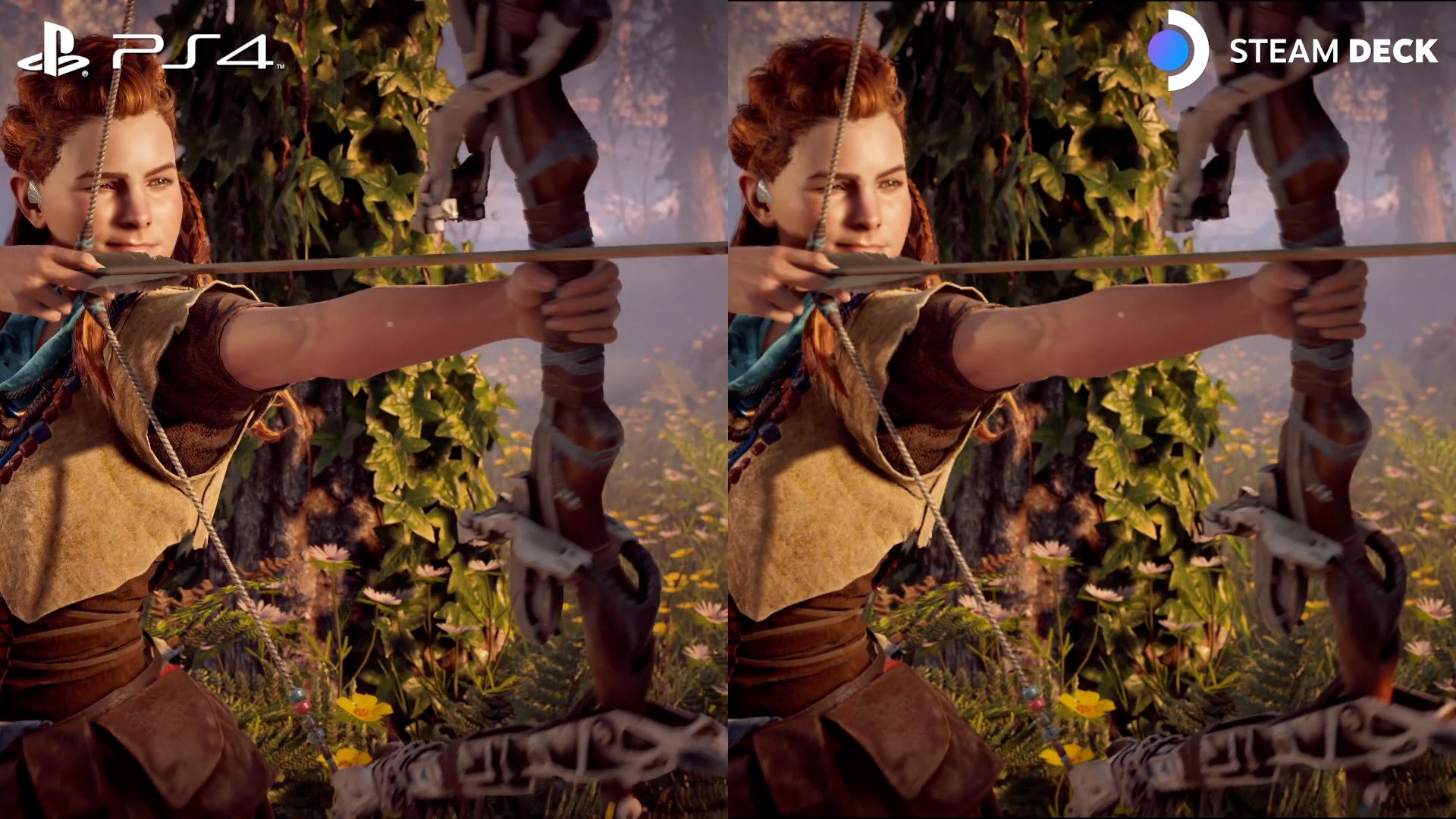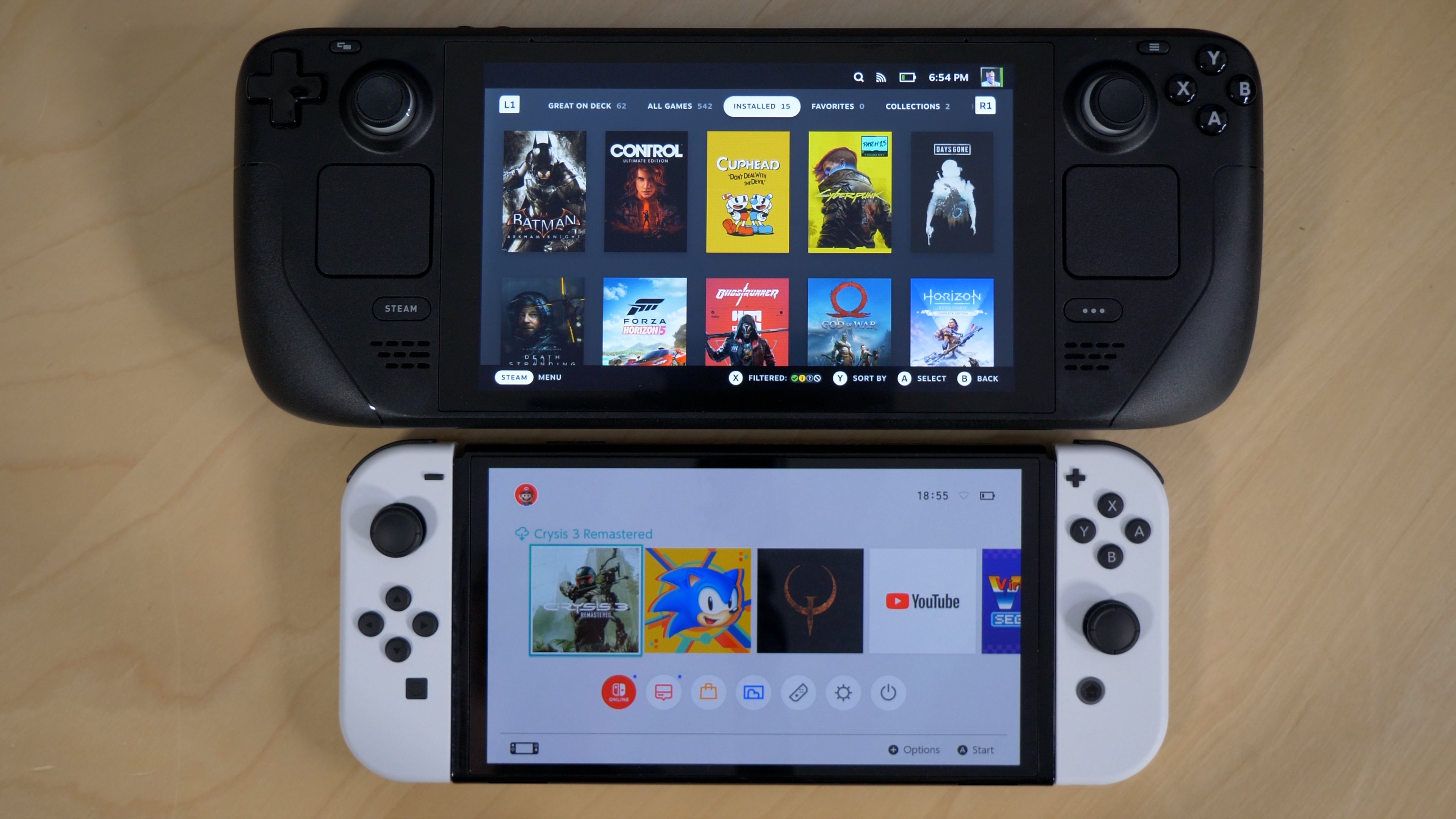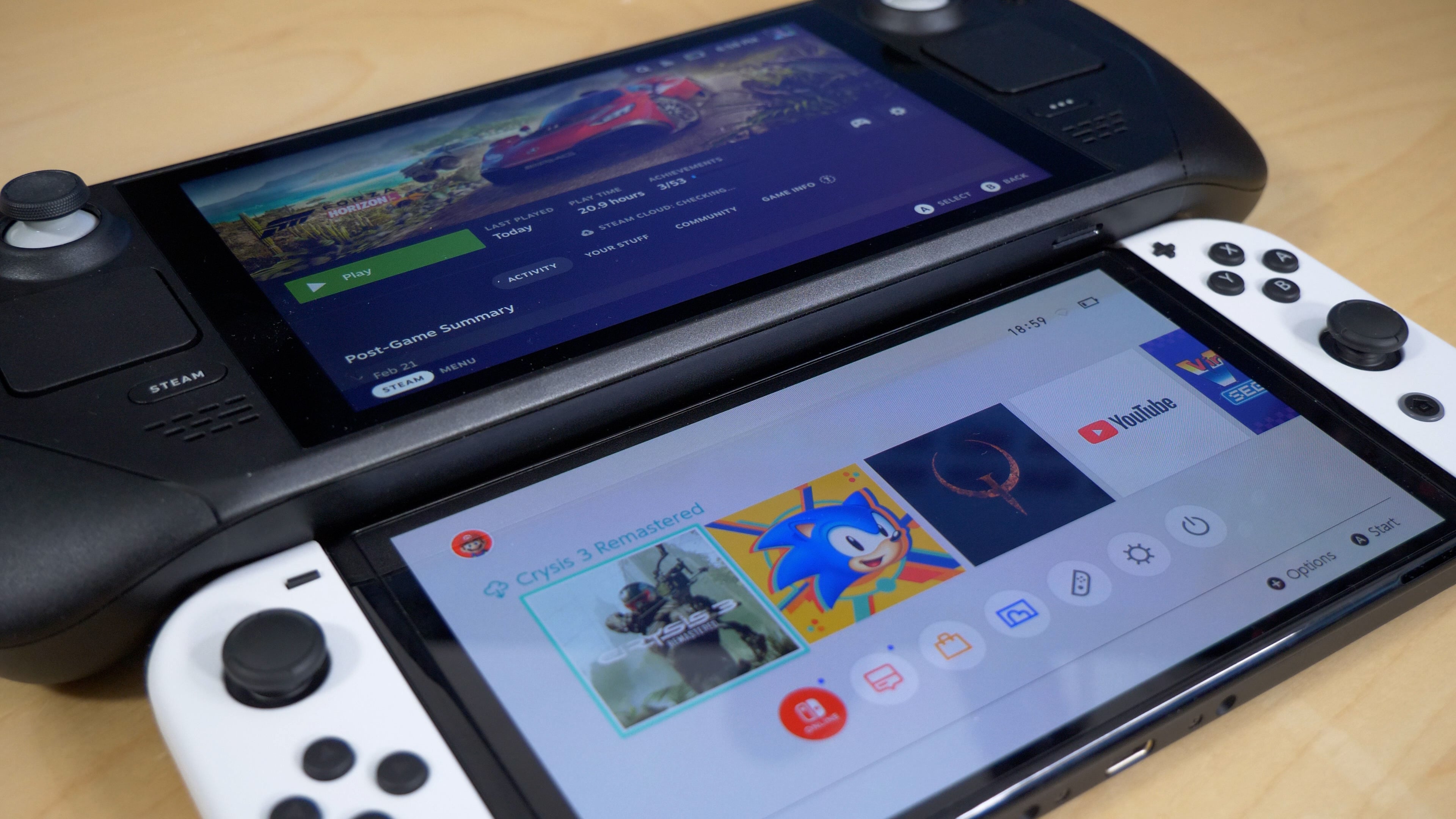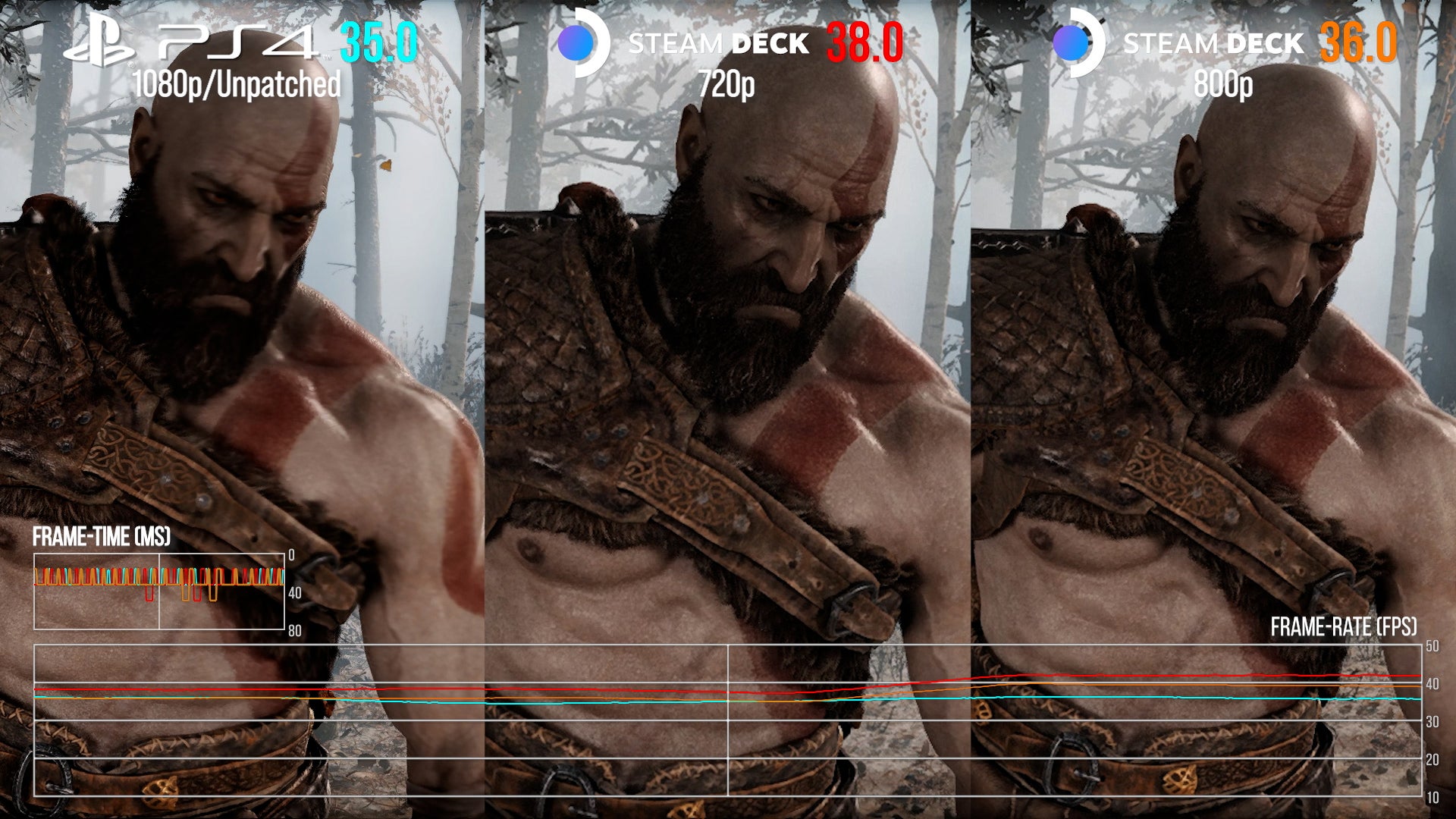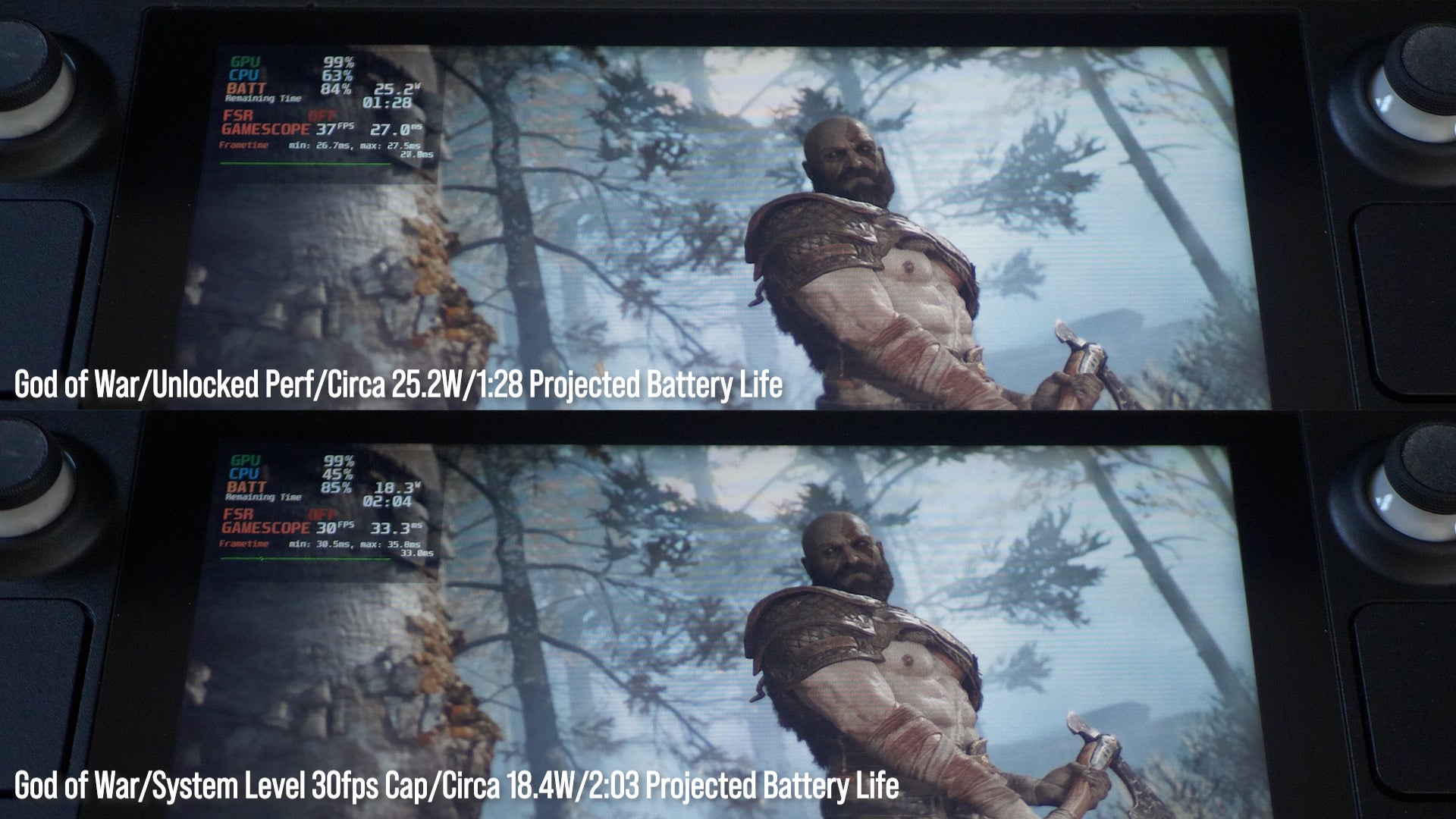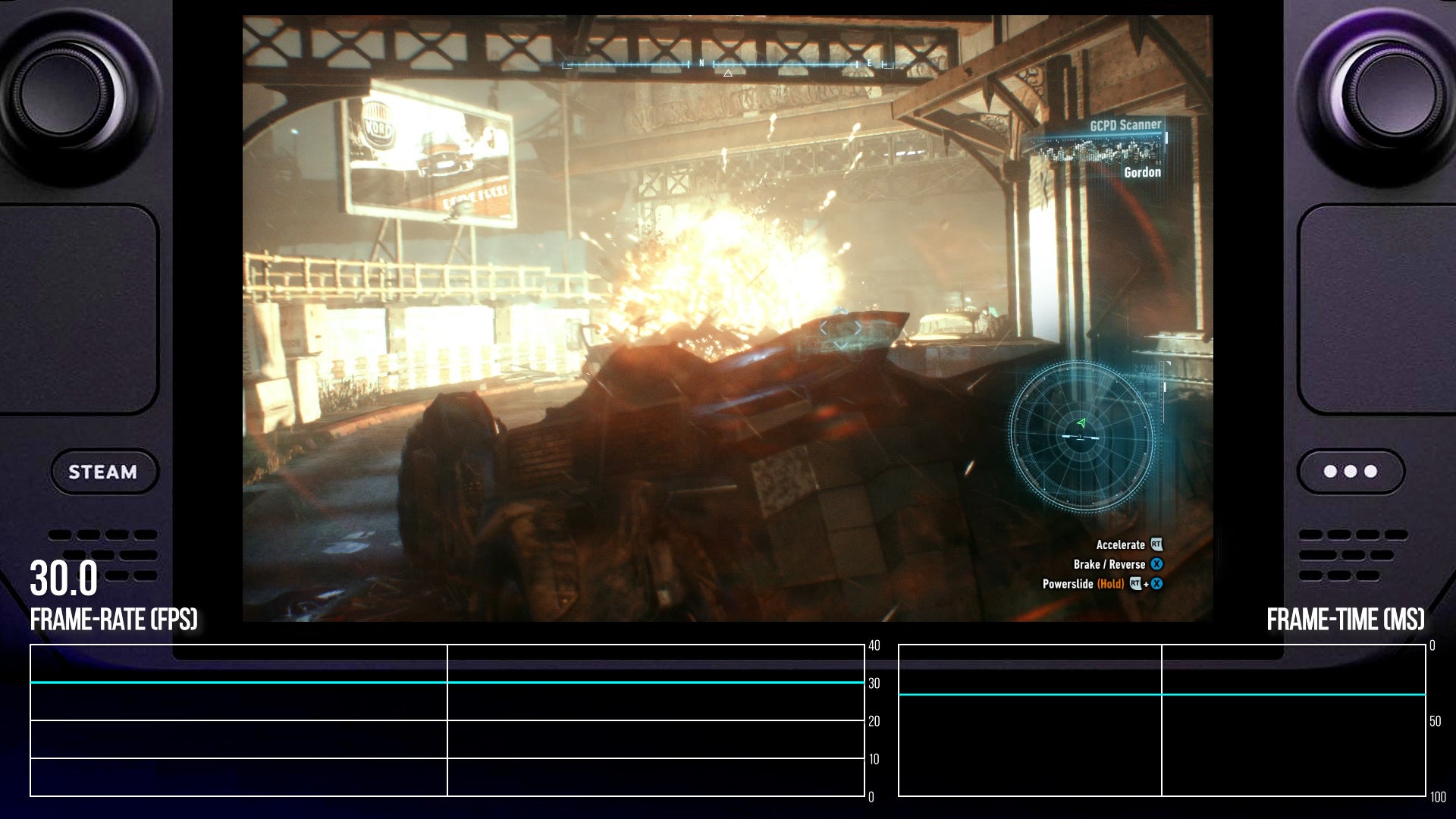I suspect it’s for this reason that Steam Deck is so eagerly awaited, because the system offers so much opportunity that inevitably, it becomes the embodiment of what everyone has ever wanted from a handheld. The cheap, powerful handheld Nintendo hasn’t delivered yet with Switch Pro? A portable PS4? The ultimate mobile device for retro gaming? Potentially, Steam Deck can do all of these things and as soon as you’ve sunk a couple of hours into the system, you get some idea of what it’s actually capable of - and from there, the possibilities seem endless. However, there is also the cold, hard reality of the niggles and frustrations you endure alongside the winning experiences. There’s still the sense that Steam Deck is very much a work-in-progress. SteamOS and software updates arrived throughout the review period, sometimes changing the experience dramatically. Right up until the day before the review embargo, new updates were still appearing (thankfully, with only minor changes) and I expect more to come. The truth is that it was only on Monday February 21st that I felt the system was stable enough to properly review it. There are still plenty of rough edges and in terms of the full Steam library compatibility the system needs, that’s still much to do. For example, Nex Machina and The Witcher 2 freeze with a black screen after loading, Red Dead Redemption 2 crashes randomly, while Doom 64’s continual seconds-long stuttering makes the title unplayable. There’s the sense that there’s still a long road ahead until Steam Deck compatibility is absolutely where it needs to be. When it works, however, it’s a marvel. In pre-launch opportunities and other marketing, Valve has perhaps downplayed expectations. When I first saw footage of Control running, it seemed to be struggling to hit 30fps. Based on my own experience of tweaking and tuning it with settings that exceed PS4 quality, it can easily sail past 30fps across the run of play - it’s a great showpiece title for the handheld. Forza Horizon 5 seemed to have issues in pre-release coverage (and during the review period too, to be honest) but since the last major SteamOS upgrade, I’m running it at a flat high preset with 4x MSAA at 30fps - it’s like a mini-Xbox One rendition of the game, only with improved quality settings over the One S version. Doom Eternal? Whack up everything to ultra settings, engage dynamic resolution scaling to counter frame drops on big explosions and glory kills and you’re locked to 60 frames per second from start to finish - incredible. There are limitations to be aware of and specific weaknesses to look out for, especially when CPU and GPU compete for system resources, but the fact is that this Steam Machine offers eye-opening levels of performance for any portable device, let alone a handheld. It may take some tweaking but the results are worth it - Steam Deck absolutely can deliver console-class performance, even on demanding titles. Obviously, resolution drops from console-standard 1080p to the mobile-orientated 720p or 800p. The controller set-up is neat, comfortable and feels good. Think of the analogue sticks, d-pad and face buttons as an interesting merging of Xbox and Switch design principles - and it works. The twin pads on either side beneath the sticks allow Steam Deck to access mouse-driven games while the impressive haptics from the Steam controller also make their way over. Shoulder buttons and triggers feel great and while it’s nice to see paddles on the rear of the machine for extra functionality, I often found myself activating them by accident. Compatibility is good, tapping into the existing library of Steam controller set-ups, though I could’ve done without camera movement attached to the gyro in Dark Souls 3. Yes, it’s large. It’s very large and comparisons with Switch are stark - but arguably, it is more comfortable to hold. The audio-video experience offered by the handheld is both good and bad. Concerns were raised about the quality of the screen when the first hardware reviews emerged a couple of weeks back and the display does feel compromised. Colour reproduction, black levels and brightness are all average and the omission of variable refresh rate (VRR) is a missed opportunity for a system where so many games unlocked sit between 45-60fps. Sit Steam Deck side-by-side with Switch OLED and it’s a night and day difference in favour of the Nintendo machine and I think I even prefer the original Switch LCD display. Acoustics are a mixed bag: on the one hand, the speakers themselves are extremely impressive and it’s rare that you can actually compliment a mobile system on its bass levels - this is great! However, fan noise is undoubtedly intrusive. It’s not that the Steam Deck is loud as such, it’s more that the high pitch of the fan under load is problematic. Ports-wise, there’s nothing on the bottom of the unit except the MicroSD card slot while on the top we have the power button, power LED, volume controls, 3.5mm stereo jack for headsets along with a USB-C for power, video out, and USB expansion. Valve has a bespoke dock on the way, but any decent USB-C hub out there should do the job if you’re willing to put up with a messier solution - just make sure you get one with USB-C power delivery passthrough. You’re going to need it. Steam Deck is significantly thicker than Switch - dramatically so. Its audio is excellent but screen quality is average. Switch’s OLED display is in another league altogether. On the right, a mirroring menu button gives quick access to notifications, friends, a pared down settings options screen and most intriguing of all, a performance menu. Here, you can specify varying levels of internal performance metrics, the ability to toggle between frame-rate caps of 30 and 60fps, and even the scope to change the AMD ‘Van Gogh’ processor’s thermal power limit and its GPU clock speed. The 30fps toggle is extremely useful and I use it extensively, but I’d recommend leaving the other settings as they are. The scaling options are perhaps more useful when docked, but essentially this setting tells the Deck what you want to happen when a game is running at resolutions under 800p or 720p. You can upscale with a standard linear technique, a nearest-neighbour algorithm that’ll like be great for retro emulators and an integer option, which basically leaves it at native res while docked with black borders. The Steam UI is feature complete right down to cloud saves working just fine. And yes, a performance menu offers up a bunch of monitoring and tweaking options that are worth investigation. There’s also system-level support for AMD FidelityFX Super Resolution - FSR. The user chooses display resolution in-game and the FSR option then scales it up to the screen’s native pixel count, with a sharpness setting available to adjust the edge enhancement effect. It is indeed FSR but somewhat different to game-specific implementations which should always be chosen in preference to the system-level option, in my option. Proper game implementations work on the 3D content, leaving HUD elements at native resolution. From what I can tell, the system-level FSR upscales everything. Valve has also made some good efforts in transitioning what is effectively a portable PC into a console hybrid and that starts with the suspend feature. Similar to Nintendo Switch, pressing the power button during gameplay puts the game into a low power state, powering down the system. Pressing the power button again brings the system back to life, exactly where you were in-game - and it does so in just a couple of seconds. It’s impressive stuff, but again, further work is required. Right now, it’s not possible to download games in the deep sleep mode - the system needs to be fully active, fan noise and all. The Steam UI scales according to resolution, becoming busier the higher your display’s pixel-count. This is how the Deck-recommended layout looks on a 1440p display. I was expecting the Steam Deck’s extra efficiency to be offset by the 2.3x higher power budget of the 4900HS to produce like-for-like frame-rates (or close to it). However, I actually found that the Steam Deck’s GPU offered anything between 51 to 61.5 percent more performance. Bearing in mind that we’re comparing Linux performance with the Proton compatibility layer in effect on games like Control and Death Stranding, I find this quite remarkable. RDNA 2’s performance uplift is the key to the Deck being so impressive - it’s how we’re able to run PC ports of console games at console equivalent settings on the handheld. Unlocked performance: PS4 1080p vs Steam Deck at 720p and 800p. At the same quality settings and boosted by the lower resolution, Steam Deck can actually deliver higher frame-rates. Overall though, Steam Deck performance is truly impressive so the question has to be asked: what is the cost for this level of performance? Pricing of the unit is not the issue: the base $399 Steam Deck is brilliant value, but even the top end $649 512GB SSD unit is a bargain. I’m talking about battery life. I could regale you with tests on various games, but I honestly think they’re a bit pointless. The fact is, you’re in control of the game’s settings, you’re in control of the target frame-rate, you’re in control of the resolution: all of these things impact battery life. What you’re not in control of is game content, which changes rapidly and can also impact battery life for good or bad. Ultimately, achieving decent battery life comes down to the user tuning the game if necessary and using the in-game settings and system-level tools to get the battery life to where you want it. It’s all about the maths: the maximum I’ve seen the Deck draw from the battery is in the region of 27W (15W for the processor, the balance on screen, storage, memory, WiFi etc) and the Deck has a 40wHr battery. 40 divided by 27 is 1.48, meaning that if you run demanding games flat-out, you’ll get an hour-and-a-half of battery life. However, reduce settings, lower resolution and crucially use the 30fps frame-rate cap and the load on the battery reduces, improving system stamina. Valve does give you a useful performance metrics overlay which does all of the maths for you. So, we’re looking at 1.5 hours or so running God of War on PS4 quality settings with an unlocked frame-rate, which rises to two hours if you cap to 30fps. On the flip side, I could run Cuphead at 60fps for well over six hours. It’s a 1.5 hour battery life minimum on Steam Deck so settings tweakery is the order of the day. Using the system level 30fps cap here claws back 36 minutes of stamina - and the game feels smoother too. Yes, crucially, Steam Deck’s 30fps limiter endeavours to deliver consistent frame-pacing. It’s the only way that 30fps can look smooth and consistent on a 60fps screen and Valve understands this and has implemented it. And yes, that does mean that console games that get 30fps ‘wrong’ work properly on Steam Deck - Dark Souls 3 is a case in point. The Deck’s system-level 30fps cap isn’t perfect, but it’s getting there. Here’s Dark Souls 3 with the even frame-pacing the PS4 and Xbox One versions do not deliver. There is one final warning though. Steam Deck looks like a console, but it’s not a console. It’s still very much a PC. Right now at least, there’s not much in the way of hand-holding with the Deck and getting stuff to run well is usually down to the user to sort out. Balancing settings, figuring out battery life on any given game - it’s all on you. Coming to the Deck after say, using a Switch, you realise how much developers and platform holders look after you in getting the most out of a resource-constrained piece of hardware. Steam Deck gives you freedom, but it may take you some time to figure out what you’re doing, and on a game by game basis no less. And yes, don’t expect every game to work. I mentioned earlier that many titles don’t work yet and you can face a situation where a game that used to work receives an update that takes the game out of commission on Steam Deck - Cyberpunk 2077 used to run, but the latest 1.5 update changes that, crashing on boot. If the work-in-progress nature of compatibility and the constraints on battery life don’t put you off, the notion that this isn’t a console and that traditional PC settings tweakery remains a constant might make the difference. Perhaps the biggest takeaway from the Steam Deck experience is that you gain a greater appreciation for how developers and publishers do so much of the hard work for you - a situation that may improve as more games receive Deck-specific profiles. Yes, the notorious PC port of Batman Arkham Knight can run fairly consistently on Steam Deck. The 30fps cap is most stable, with only occasional streaming-related stutter. Horizon Zero Dawn’s PC port had its issues, but can Steam Deck deliver a solid 30fps with PS4-equivalent settings? Aside from some occasional background streaming stutter, yes it can! Now let’s really push things: can it run the much-maligned PC port of Batman Arkham Knight at a consistent frame-rate? Yes it can, on max settings, no less - excluding Nvidia exclusive features, of course. The list goes on. Yes, there are still many improvements that need to be made at the software level and I can’t help feel that elements like fan noise and battery life can only be resolved with a revised processor on a more efficient process node. And despite having hardware in hand for a while now, there are still many questions we need to answer - such as how well the handheld ideal holds up with Windows installed, for one. There’ve been many challenges in reviewing Steam Deck and many frustrations over the last couple of weeks. However, when the ‘wins’ started to roll in, I only only became more intrigued and excited about the system and the potential it offers. Reviewing Steam Deck is essentially reviewing a PC, which can be done in any number of different and interesting way. And with that in mind, I can’t wait to read other reviews and to find out what other surprises the system may have to offer.
